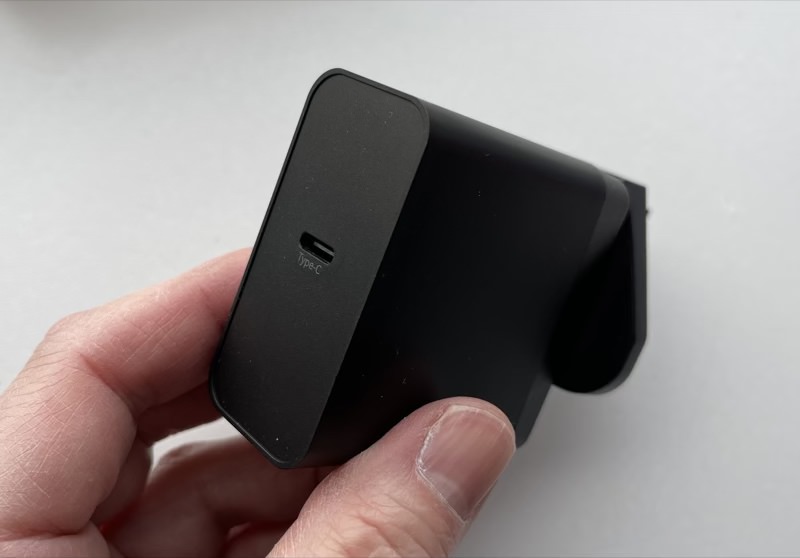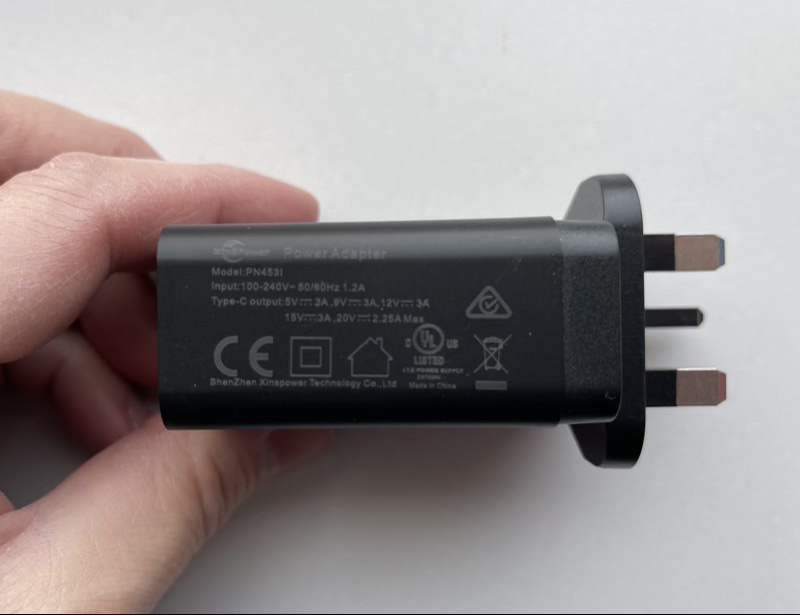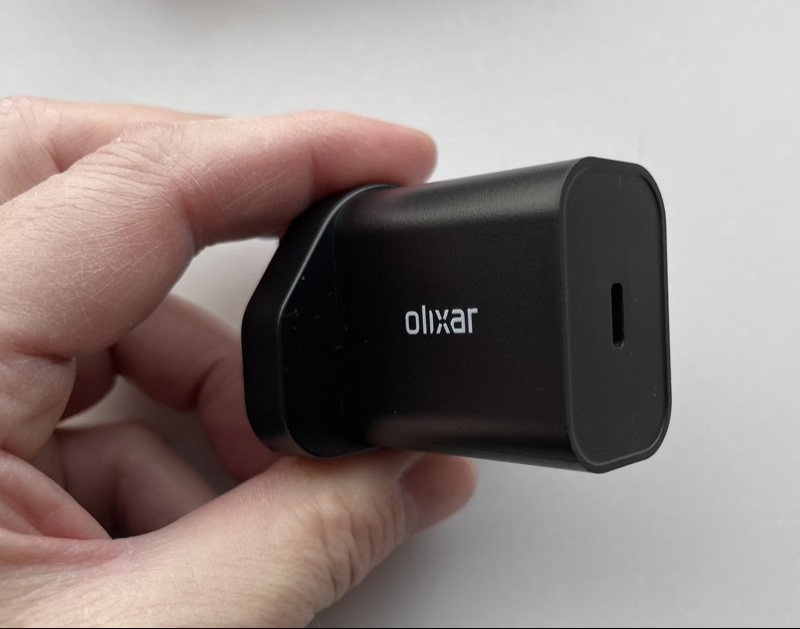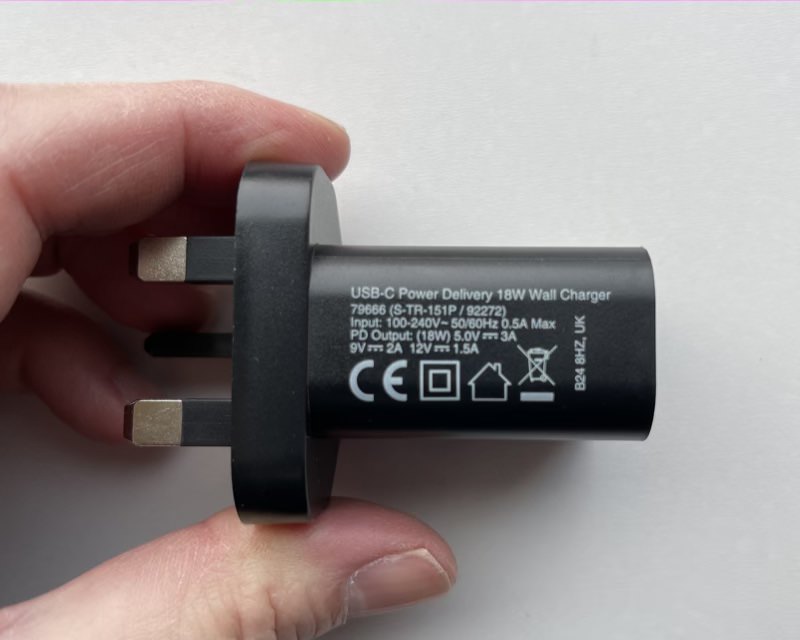Review: Type C (including Power Delivery) charger round-up
Over the years we've seen an uptake in USB Type C. The Lumia 950/XL were in the vanguard, along with the Google Nexus devices of the time. From basic 5V/3A delivery through to multiple voltages in 2020, Type C has both come a long way and also gotten slightly more confusing. Here, providing a brief summary of the technicalities involved, I also want to (start to) review some of the commercially available USB Type C mains adapters. Don't worry, I'll add to this in time.
More and more commercial phones, tablets and laptops, and all the more accessories, they're all now powered by USB Type C and often now come with a Type C-to-Type C cable. Now, if you're powering a £2000 MacBook then you're best off using official chargers because, well, you'd hate to blow something up. But in many other cases it's simply a case of finding a modestly priced but hopefully high quality mains-to-Type C plug. Which is where the reviews below come in (and I'll add to this feature as new hardware arrives).
At its heart though, and simplifying slightly, 'Type C' is just a hardware standard - the mechanical jack, and pin layout. The hardware is rated up to 100Gb/s for data and up to 100W for power, though this of course depends on the implementation and quality of cabling used. Type C:
- is reversible, so works either way 'up'
- supports USB 2.0, USB 3.0 and USB 3.1 Gen 2 standard protocols (a protocol is a set of rules for what happens when certain signals and voltages are seen on certain pins)
- supports third-party protocols in 'Alternate Mode' (see below), depending on the hardware involved
- allows devices to negotiate and choose an appropriate level (Volts, Amps) of power
 (Image from Microchip)
(Image from Microchip)
- VBUS (Voltage bus) and GND (Ground) are power lines, obviously. Of note is that VBUS isn't always carrying 5V - the USB protocols allow this to be negotiated upwards if needed, to a maximum of 20V under 'so-called' Power Delivery.
- D+ and D- are the main data lines for legacy USB 2.0 devices, while the RX and TX lines are used for data duties under USB 3.0/3.1.
- CC1 and CC2 are for Channel Configuration and tell the hardware which way 'up' the cable is, which end is acting as host, and so on.
- SBU1 and SBU2 are for low speed data transfer, if needed, in 'Alternate modes'.
Various 'Alternate modes' have been thought up so far, effectively using the pins above in creative ways to carry signals for various tasks. DisplayPort, HDMI out, and Intel's Thunderbolt are common examples. The jacks and cables remain the same, but if both ends of the cables speak the same CC language and if the cable is man enough for the job (think frequency support and current carrying ability) then these other modes light up.
(Qualcomm's proprietary Quick Charge 2, 3 and 4 systems, each offering different intelligent selection of voltage and current, are delivered over USB-A at the host end, so they're excluded from this feature. Many Samsung phones supported this a while back, but - partly thanks to the licensing costs involved - the vast majority of modern phones don't include it. I've also not mentioned the proprietary fast charge systems from various Chinese phone makers, also dispensed via USB-A or with a proprietary moulded wall brick.)
Into the Type C world
A few years ago (think Lumia 950 or Samsung S9 chargers) a typical Type C power solution would be a mains to USB-A brick and a USB-A to Type C cable. But things are changing, hence this review/feature. Apple in particular have standardised on mains bricks with Type C output for their MacBooks, iPads and now iPhones and their MagSafe chargers. Android phone makers are a little behind, but Type C adapters will become more common in 2021. And you may have spotted that the NexDock Touch, just in for review, also comes with a Type C mains brick. In fact, I'll feature it immediately below, as a data point, since it's generic and I'm sure available separately, if needed.
You'll recall that I've been reviewing Type C power banks for years now, perhaps maxing out on the PD front with this dodocool offering. It's also worth noting that when you're going C-to-C from a mains outlet then there's none of the 'Which end is host?' confusion - with a power bank if you connect up in the wrong order then it's possible to have the phone charging the power bank by accident. Here it's obvious to the electronics which way the current should flow!
Charger round-up
So yes, supplied with that NexDock Touch and a good example of an OEM-supplied Type C brick:

This is on the large side, but then it supports up to 45W, as you can see below. It's worth noting that all chargers have to have their voltage and current specs printed on their casings by law. Usually in crazily small print but then that's what my image cropping tool is for! And usually poorly printed, so no, it's not my camera focus that's off below!!
It's also worth noting that there's a clear division in terms of tech between silicon-based chargers, as here, and the new breed of Gallium Nitride (GaN)-based chargers. These are smaller and more efficient, losing less energy in the power conversion, so they can be smaller overall. When available, I'll add such accessories to this page.

We see here fairly typical Power Delivery steppings. 5V/3A (as on those early 2015 Lumias), 9V/3A, 12V/3A, 15V/3A and finally 20V/2.25A. The higher voltages tend to be needed by laptop (or lapdock), i.e. larger equipment, while phones tend to max out in the middle of that voltage range. But yes, 45W in total, at most. I tested this with the NexDock Touch (obviously) and a range of other devices, including the Microsoft Surface Go, and all was well. PD is pretty robust now - it may not be as customisable (by the manufacturer) as the proprietary Quick Charge set-ups, but it's demonstrably good enough and a lot easier to implement.
(Of note is that this slightly generic charger has slot in pins for the various international markets - NexDock supplies a selection with the NexDock Touch retail pack.)
Olixar Power Delivery 18W Wall Charger, £15

Smaller and less able than the NexDock OEM brick above, this is also relatively inexpensive. I'm sure there are even cheaper alternatives available for import from various sources, but getting Type C chargers with UK mains pins isn't trivial.
As you'd expect from the smaller body, the current handling is lower than on the NexDock one:

Befitting the '18W' in the title, this is 5V/3A (the baseline), 9V/2A, and 12V/1.5A. It's fine for a decent wired charge into a Type C-equipped smartphone, it should be fine for powering (e.g.) Apple MagSafe Qi pads, but it won't do more than trickle charge a Microsoft Surface and it won't be accepted by a modern MacBook.
Apple 20W USB-C Power Adapter, £19
Talking of Apple, I've also got this in for testing (along with the MagSafe Qi pad, of which more in due course, once I've tested it with a wide enough range of smartphones).

It has to be said - Apple do know how to design and make things. This is stunning as a travel gadget as the mains pins fold neatly into the body. Moreover, they're mechanically connected and sprung - so you lift up the end of the earth pin and the other two rise in opposition, snapping into place with a very satisfying 'thunk'. Impressive.

In terms of specs, they're absolutely tiny and printed underneath one of the pins(!):

Notably, this doesn't handle the 12V tier of output at all, but it does offer slightly higher current at 9V, i.e. 2.22A, or the '20W' in the product title. It's a few pounds more than the Olixar offering, but does have the unique foldaway feature, so you'd typically choose based on whether the charger would be used at home or on the move. Good to have options, anyway.
________________________________________
I'll add to this round-up as needed in the coming weeks and months. Do note also that several of the more expensive multi-port accessories that we've reviewed here may also fit the bill, including:
Reviewed by Steve Litchfield at
